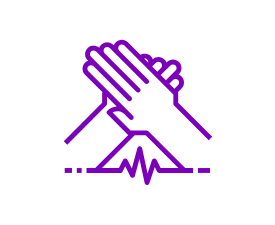AHA vs American Red Cross vs ASHI. Is Any Better Than the Others?
What’s the difference between the American Heart Association (AHA), American Red Cross (Red Cross), and American Safety and Health Institute (ASHI) training programs? Many ask this question as they see the options for CPR and safety training and certification. And, for good reason. The vast variety and amount of classes available can make for a confusing choice.
TL;DR—> The Short Answer. The short answer is: None is necessarily better than the other. There aren’t major differences between the training offered by either; each organisation states they use the recommendations set by the International Liaison Committee on Resuscitation (ILCOR) as the basis for its curricula and programs. At the same time, one may be more appropriate or right for you, depending on your specific needs and preferences. If you are unsure of your employer’s requirements or preferences, be sure to check with your employer first before registering for a class.
For instance, some healthcare organizations require that their employees become certified by AHA and won’t accept either Red Cross or ASHI. Or, perhaps, you want to be certified for the lowest price? Classes that use the ASHI program generally have the lowest prices. At the same time, the American Red Cross training generally offers great flexibility in class format, allowing students to take shorter review classes, or even test out of the class entirely.
The GREAT news is Purple offers ALL THREE!
Let’s dive a little deeper to get a better sense of the similarities and differences.
You can use this information to make the best decision
for yourself or your organization.
Register for AHA, Red Cross, or ASHI classes with Purple
Who Sets the Guidelines?
The ILCOR Provides Recommendations
The International Liaison Committee on Resuscitation (ILCOR) is an international body, formed in 1992, that allows major organizations to coordinate on CPR (Cardio Pulmonary Resuscitation) and ECC (Emergency Cardiovascular Care) protocols.
Goals of the ILCOR
They meet twice per year to discuss CPR, promote research, collect and review scientific data, and distribute training information. Ultimately, all of the discussion, information sharing, and scientific review, all culminate in recommendations on CPR and ECC procedures, training, and education.
The AHA’s Role
So, where does the U.S. and our organizations fit into all of this? AHA is the American liaison or representative to the ILCOR. They attend meetings and take the information gathered and recommendations back for use by other American organizations such as the American Red Cross (Red Cross) and American Safety and Health Institute (ASHI).
Acceptance
AHA Contributes to Scientific Research
This is where things may get a little interesting and may be a deciding factor in which organization you choose for your training and certification. Although all three organizations (AHA, Red Cross, and ASHI) state that they follow the guidelines set by the ILCOR, the AHA is at times still more trusted by some industries and employers. Healthcare organizations tend to favor the American Heart Association (AHA) and many only accept AHA certifications for BLS, ACLS, and PALS.
Why is AHA more widely accepted? Some think a part of the perception of AHA as the leader is branding. They’ve marketed themselves as the authority in the U.S. consistently and well enough that some companies view them as more reputable. Regardless of how much marketing and branding play a role in AHA’s wide acceptance, a big influence is their role as a research organization. Unlike the the Red Cross and ASHI, AHA contributes significantly to the scientific research on CPR and ECC. Just as Red Cross shines as a humanitarian organization, AHA shines with research.
All three organizations (AHA, Red Cross, and ASHI) are well known and accepted in general for training and education for CPR, ECC, and First Aid.
Pricing
Which Classes are the Most and Least Expensive?
There’s no hard and fast rule here in terms of how each organization ranks in terms of price - and honestly, we hesitate to even rank them because it varies so much. However, in general, AHA training and certification costs the most, Red Cross ranks in the middle, and ASHI tends to be the least pricey. Again, this order isn’t set in stone. It really depends on location, the company that provides the training, the class format you choose, and other factors.
Pricing Structure
The pricing structure of training from each organization is also different.
AHA: Students who receive training from AHA need to purchase BOTH the training and the student manual. Purchase of a student manual is required with AHA classes. If enrolled in a blended, "Hybrid Learning™” class, where part of the class takes place online and part takes place in-person, students need to also purchase the online portion separately.
Red Cross and ASHI: In contrast, Red Cross and ASHI classes are often packaged as one price to the student, however, even though instructors and training centers have to purchase the certification for each student that successfully completes a class.
Courses and Course Formats
Courses
The American Heart Association (AHA), the American Red Cross (Red Cross), and American Safety and Health Institute (ASHI) all offer CPR, First Aid, BLS, ACLS, and PALS training and certification. Again, it’s important to check with your employer as they may prefer or require one organization.
Course Formats
Full Hands-on Experience™: The traditional course format has: an instructor, a classroom full of students, and several hours of learning. At Purple Health and Safety, we do offer this format, but we have created a better experience for you! Purple’s instructor-led, Full Hands-On Experience™ allows you to interact with our knowledgeable instructors and other students. Our Hands-On Classes include visual, auditory, and reading/writing opportunities so that you leave confident. Will we put you to sleep? No!!! Instead of someone is talking at you for hours on end, we teach classes that we ourselves would like to take. These classes lively, engaging, and interactive. Come join us. Sign up here.
Hybrid Learning™: Another popular course format is blended, or Hybrid Learning™. All three (AHA, Red Cross, and ASHI) offer allow students to first learn everything online and then get tested on the skills in person. Some students enjoy the flexibility of this format as well as the lessened time spent in the classroom. Like how that sounds? Register for Hybrid Training here!
Other course formats “Review” / “Renew”, and “Challenge”.
Quick Renew™: Review / Renew classes are a quicker certification option for those who are still certified and need to renew. AHA does not offer a Renew option for CPR or First Aid, but does for BLS. Red Cross and ASHI both offer Review formats for CPR, First Aid, and BLS. Check out Purple’s Quick Renew™ options.
Just the Test™: The “Challenge” format can be used by any student regardless of if a student is currently certified or even has even been certified. This is the perfect opportunity to quickly get certified for any Red Cross or ASHI class by simply “testing out”. Purple’s “Challenge” training, Just the Test, can be taken in a group setting or 1-on-1. Just the Test™ means no learning or practice. Just show off your skills, and get your certification!
EZ Practice + Test™: This is the perfect happy middle if you want to save a ton of time while increasing your chances of passing. Many students who have been certified more than once would prefer a shorter re-certification option such as Hybrid Learning™ or Quick Renew™ or Just the Test™. For those who like a idea of the super-quick Just the Test™, but who are worried about perfectly remembering and testing their skills with no help from the instructor
Purple Health and Safety offers EZ Practice + Test™. This popular format allows you to kip all the learning - an instructor will help you remember and practice the skills, and when you are ready, you can be tested.
Difficulty Levels
The American Heart Association’s (AHA’s) courses are sometimes thought to be a little more difficult and in-depth than classes offered by the American Red Cross (Red Cross). This purely anecdotal, however,and the answer is often different, based on who you ask. It really depends on the class you take, your employer’s requirement, each person’s perception, and even the trainer that teaches your class.
Summary - Which One Should You Choose?
Ultimately, the choice comes down to your personal preferences, the requirements of your employer, if any, your budget, and availability of classes in your area.
Want to sign up for a class now? We’d love to see you! Purple’s training covers all three organizations (AHA, Red Cross, and ASHI).
Register for training at a Purple Training Center here or sign up for us to come to you.
Want to talk to one of Purple’s Customer Happiness Team Members? We’d love to hear from you.
Send us an email: hello@purplehs.com
Or, give us a call at (443) 949 - 3244











